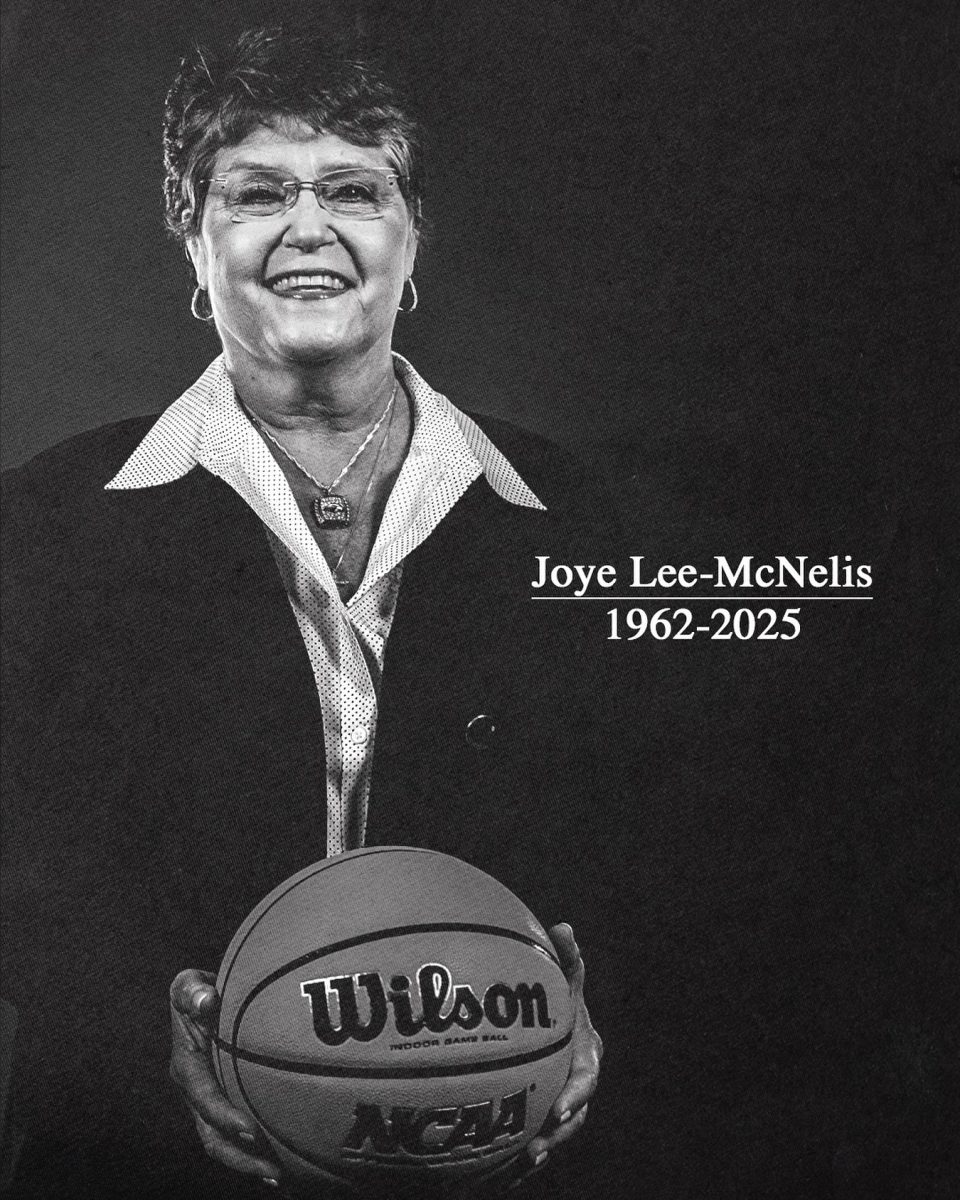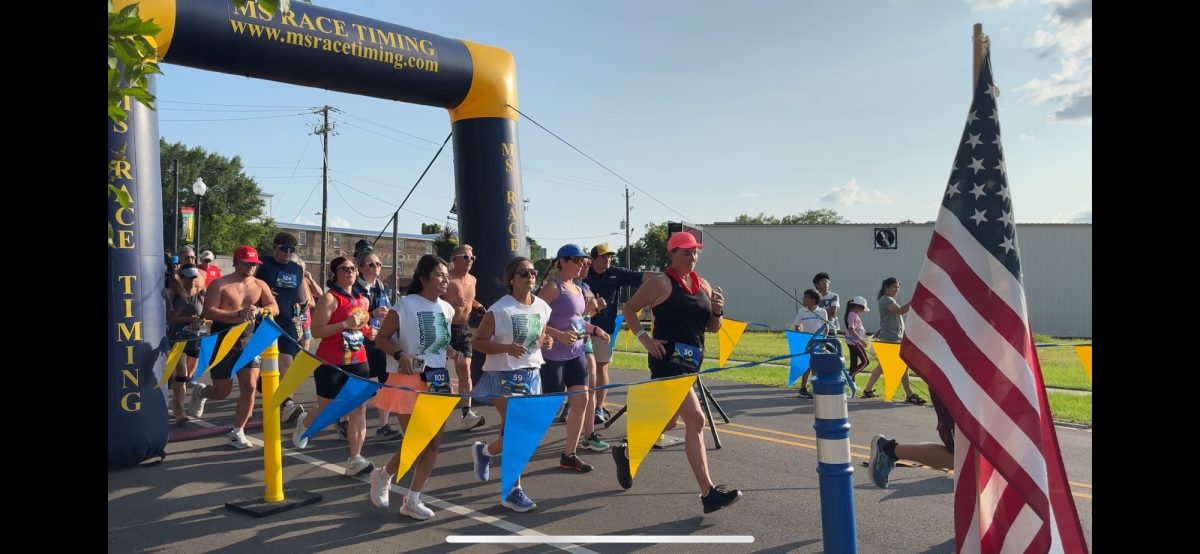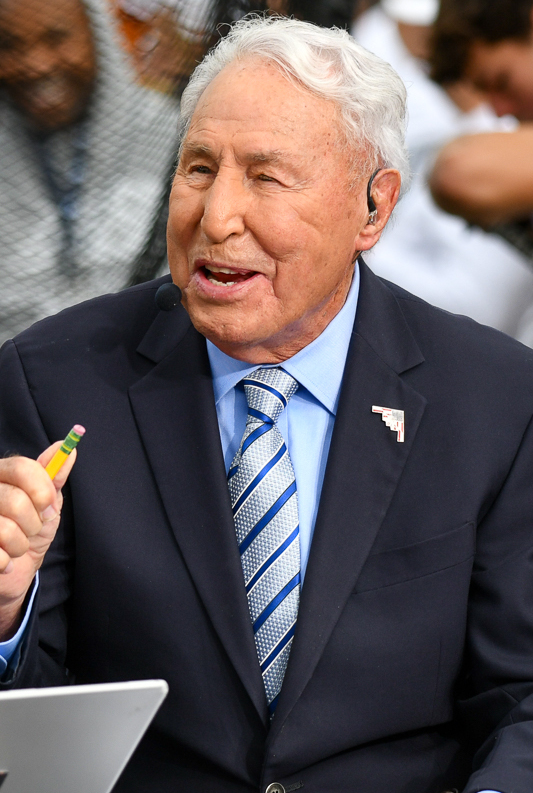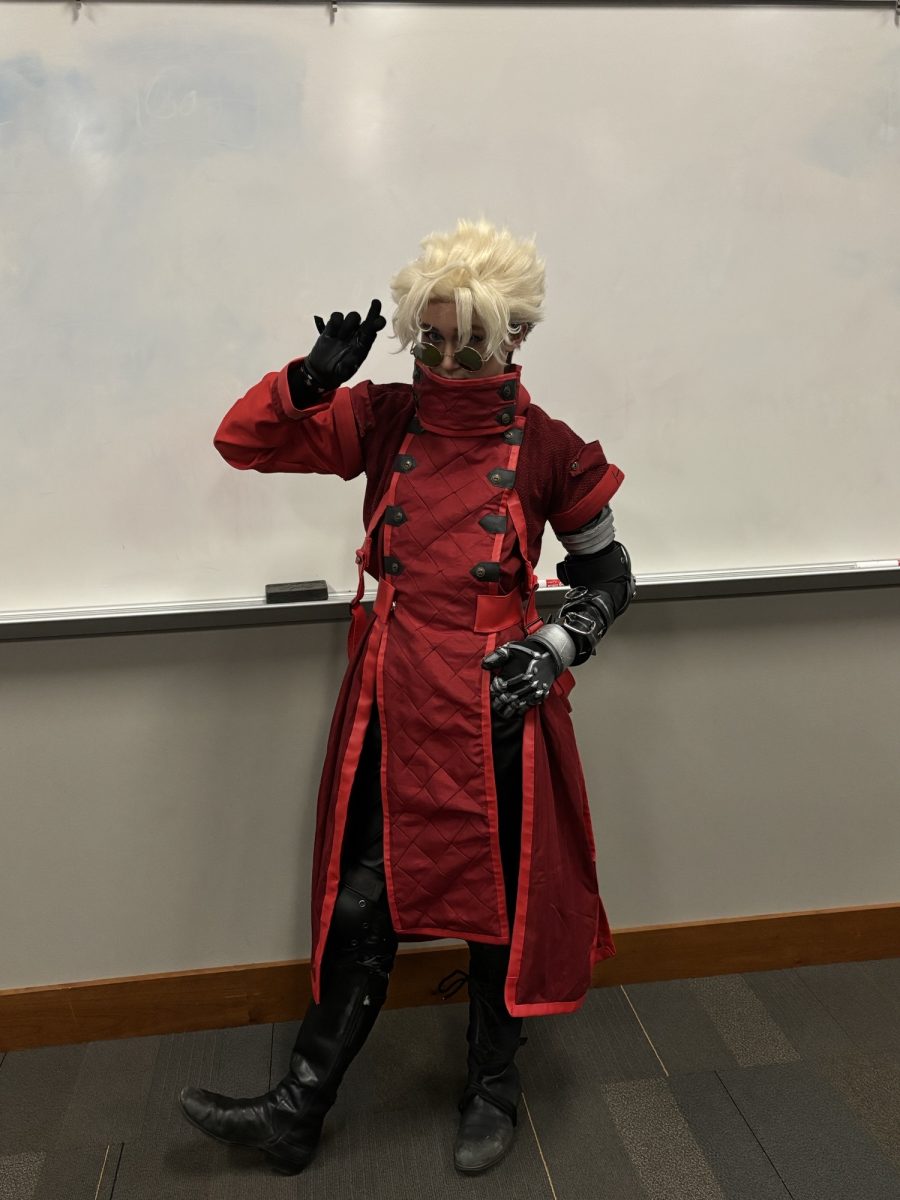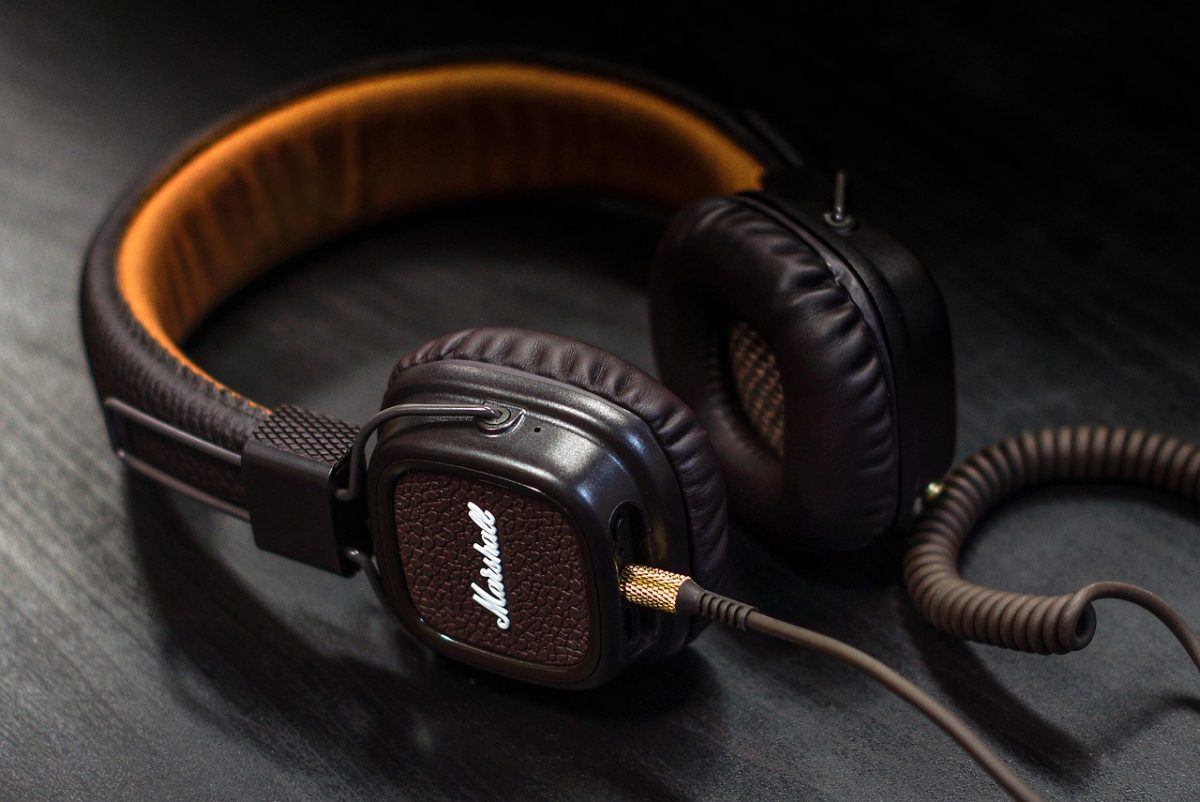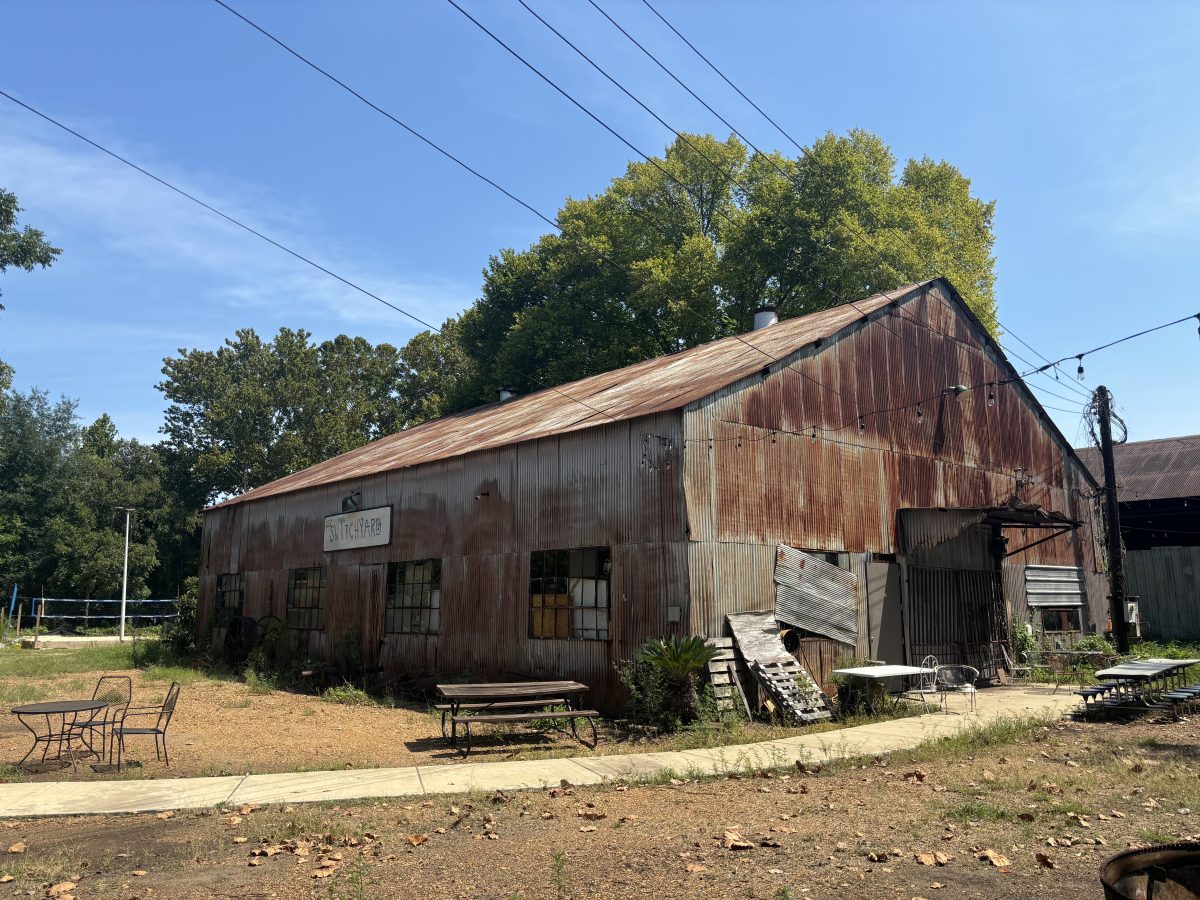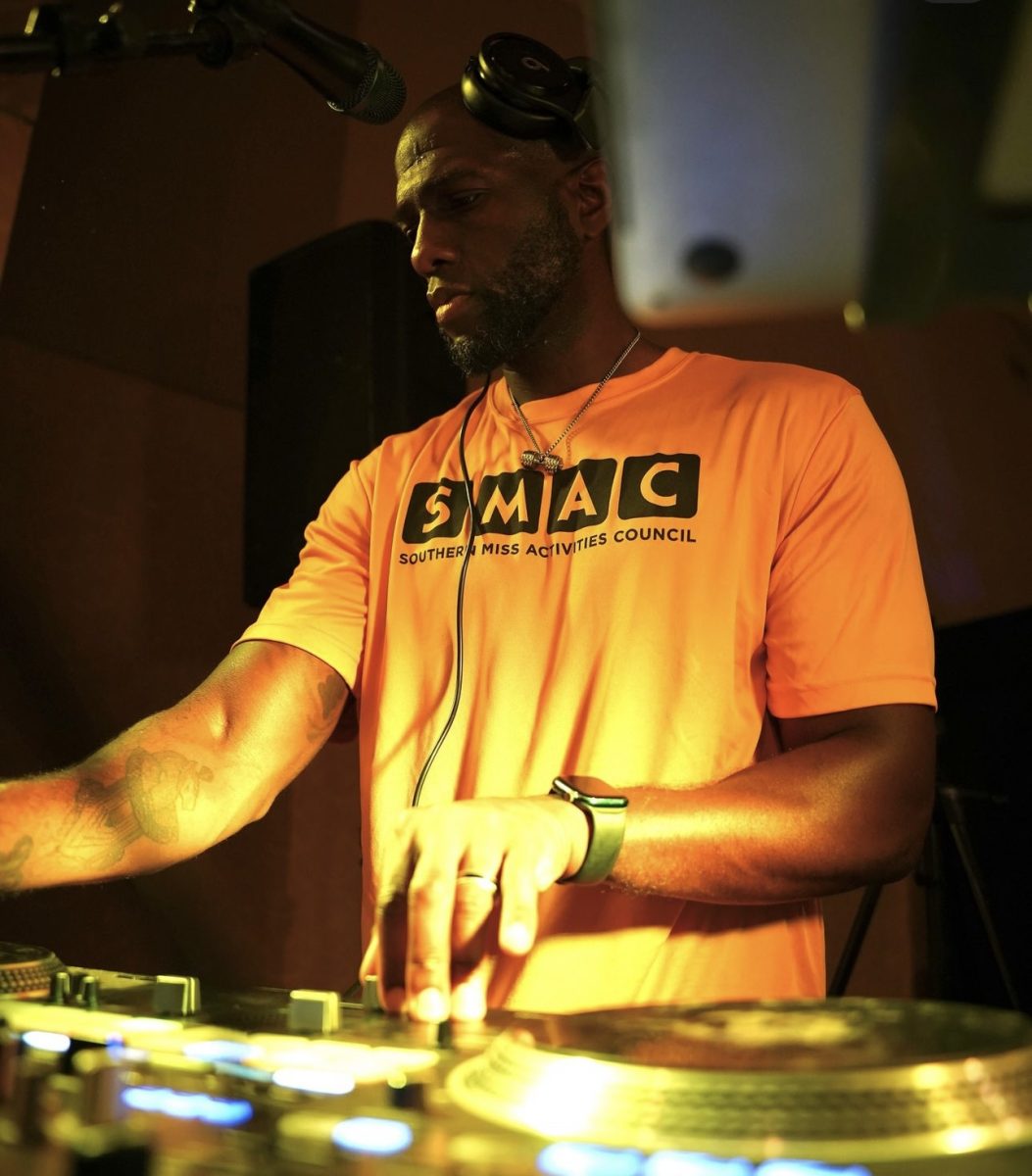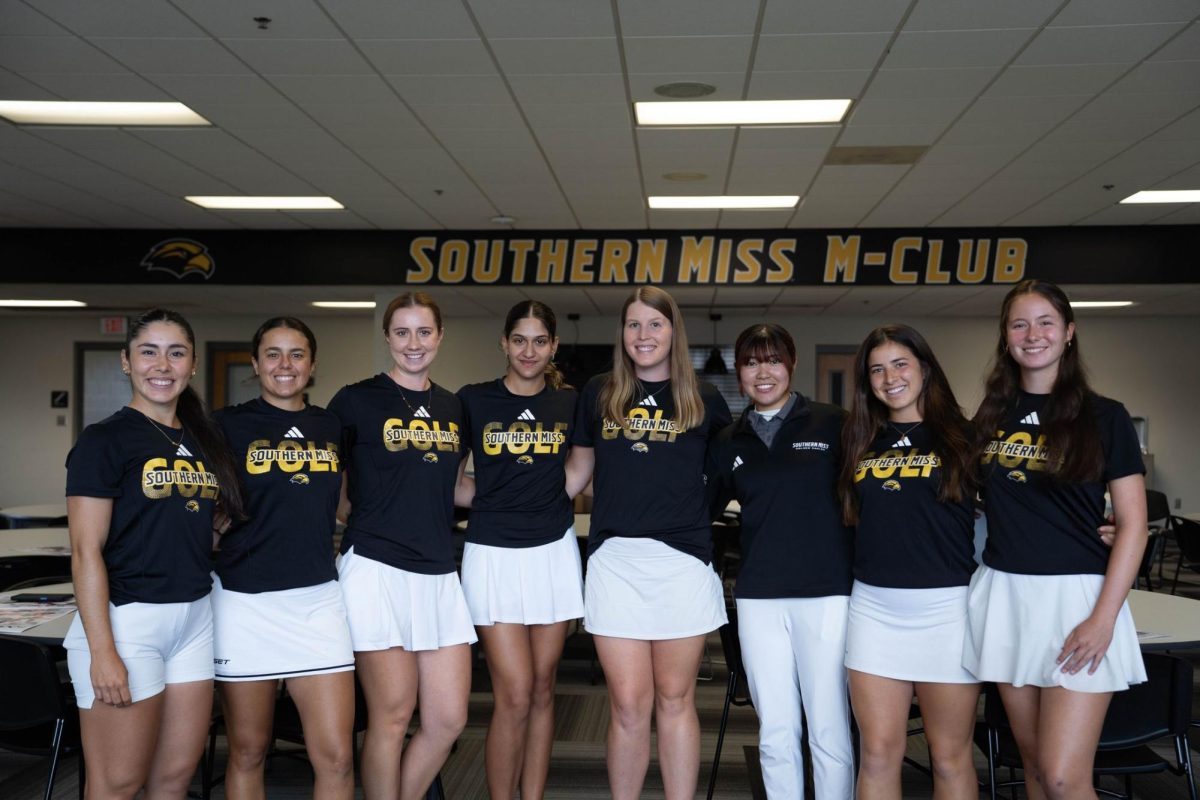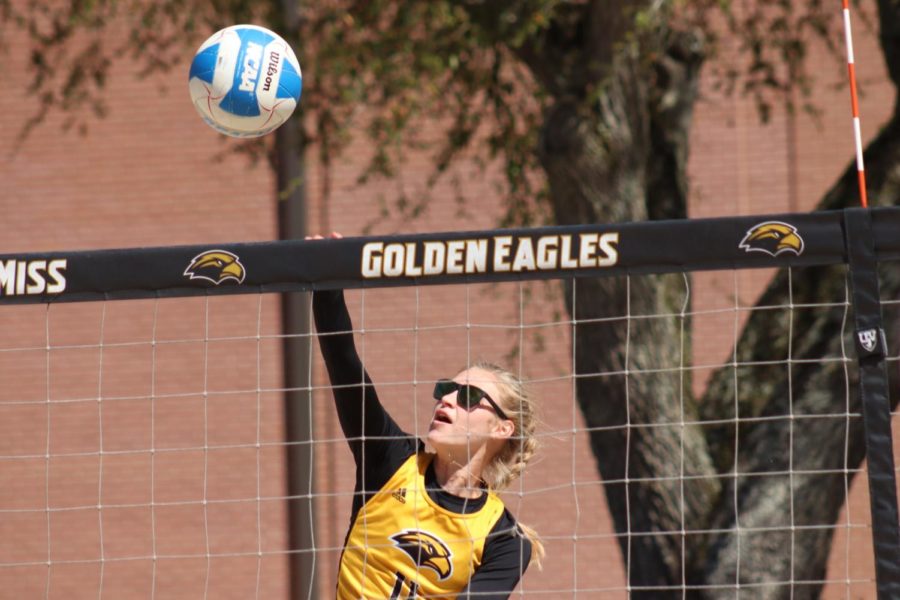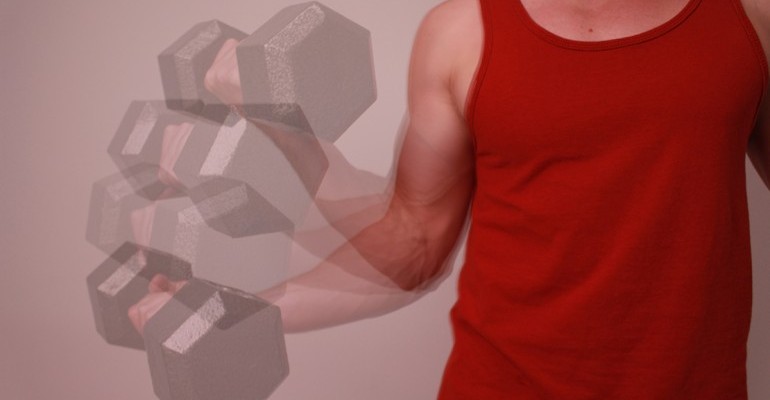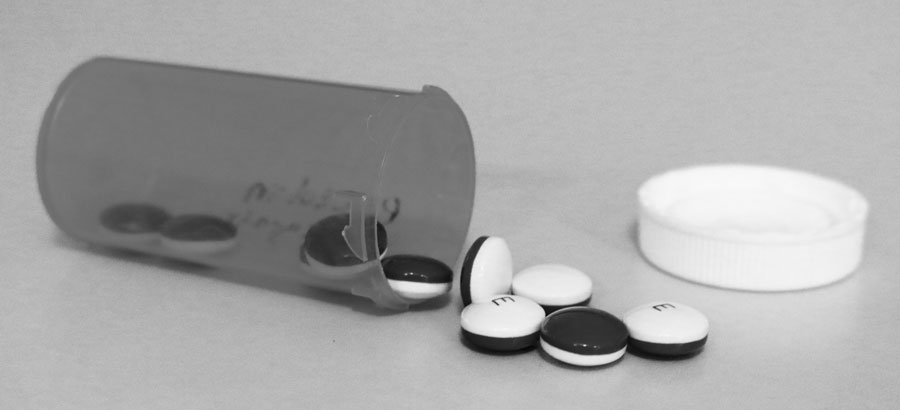Photo illustration displaying weightlifting form through countinuous motion. Modeled by Senior Patrick Lowe. -Aaron J. Stewart/Printz
Some guys like to dwell on their glory days of being on the football team in high school, but I’m not one of those guys insofar as I had no “glory days.” I played for one year and in that time I was involved in just one play at the varsity level—a kickoff late in the fourth quarter.
Needless to say, I wasn’t very good, but I did become good at strength training. However, it wasn’t until I arrived at Southern Miss that I realized what I had been doing wrong.
I had focused all my attention on how much weight I could lift, but I never focused on how I was lifting that weight. Thankfully, I have a patient workout partner who corrected my form every five minutes we were at the Payne Center. Now, I can appreciate excellent form instead of trying to appear strong.
But there are still multitudes of beginning bodybuilders who have this max-weight-at-all-costs mentality. This can be horrible for your body’s development and even be dangerous.
But what is form? Abigail Elias, the fitness and wellness coordinator for Southern Miss Recreational Sports, said form is what an individual’s body is doing during a certain movement.
“Whether it is correct or incorrect, form is the term for what our body is doing in space during a particular movement,” Elias said.
“Form is important for long-term benefits of health. Students who are in their teens, 20s and even 30s may not understand the importance of truly taking care of their body. If you perform squats, lunges, shoulder presses, etc., incorrectly now, it most likely will not directly affect you until later on down the road when you have knee problems, hip problems, back problems, etc.”
I brought up my football experience because I regularly joke about my former team’s abysmal form in the gym. On days designated for shoulders, neck and back, my teammates would grab a 45-pound plate, hoist it up at a 45-degree angle over their heads and proceed to jerk it back and forth from their chest, mostly using momentum to push it out. This was their idea of a shoulder press, and it’s
downright laughable.
At the same time it’s equally terrifying to think what such improper form was doing to our elbows and shoulders. Our coaches never corrected us or told us to do any differently, but they should have been the ones to tell us how damaging these movements
could be.
Shelby Starnes is an International Federation of Bodybuilding and Fitness (IFBB) bodybuilder, powerlifter, nutritionist and trainer who won his pro status in the 2012 NPC Master’s Nationals competition. Starnes addressed the issue of form in a recent Muscle and Fitness magazine article.
“Never sacrifice form for weight,” Starnes said.
“You need the proper form first. Yes, gaining strength and handling heavier weights over time is going to help, but you shouldn’t compromise your form just to push more weight. That’s not going to build muscle, and it’s going to put you at risk for an injury.”
The whole purpose of weight lifting, or bodybuilding, is the contraction of the muscle to stimulate its growth. But if a person uses incorrect form, then he or she is receiving the least benefit of that movement and possibly a lot of damage to muscle, tendon or ligament.
Take, for example, a person doing a back squat. If that person’s back is arched, upper body leaning well past the knees and the buttocks not very low, then the form is terribly wrong. This person risks serious back injury, experiences even more difficulty lifting the weight back up than when doing a proper squat and isn’t even working the muscle well at all.
He or she should keep a straightened back, ensure the upper body is not leaning past the knees and squat low enough to reach about a 90-degree angle. And if this person is struggling with the weight, then a lesser weight should be used.
After sustaining a back injury during a competition in Munich, Germany, powerlifter and Bodybuilding.com contributing author Maunel Fausett now espouses a philosophy of emphasizing form instead of weight. In a May 2013 article titled “Form Versus Weight/Momentum,” Fausett outlined how to make the most of a visit to the gym.
“Whenever you step into the gym, forget about competing with the other lifters,” Fausett said.
“The purpose of going to the gym may vary, either to improve your physique or release some stress. Regardless, you are there to take care of the most important person: you. So forget about the ego and just concentrate on yourself and your needs.”
Once you have left your ego at the entrance of the gym, Fausett said, you can focus on the following: slowing down the exercises to make the most of the muscle contraction, using lighter weight to control the movement and to avoid using momentum, performing repetitions correctly—without long pauses mid-set— and getting an independent observer or spotter to correct your form.
Don’t worry about simply moving the weight from point A to point B. Don’t think that an exercise is about moving the weight at all costs. If you truly want well-developed musculature, then you need to emphasize your form, not the weight.
This was an article of opinion by Managing Editor Alan Rawls.

